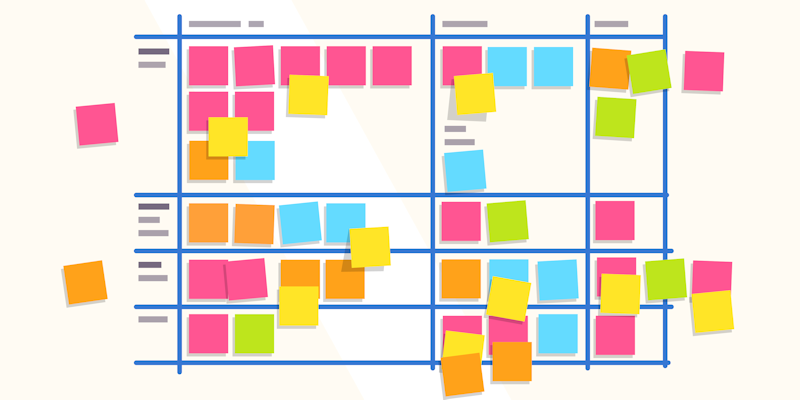
Developing new products or enhancing existing products is critical for continually adding value to your customer base. If you are short on ideas or have more than you know what to do with, story mapping can help!
Product development teams can easily miss the big picture if they concentrate solely on one enhancement. Story mapping is an Agile technique that creates a narrative from the user's perspective and provides a deeper understanding of what to build, for whom, and why.
Process in Action
I recently worked with a team of developers, business users, and managers intimately familiar with their customers and their needs. This team wanted to build a complex, feature-rich application that would work for multiple different users. To accomplish the ultimate goal – delighting their customers and fulfilling their needs – I took them through a three-step story mapping exercise.
1. Establish Shared Understanding
First, I helped the team articulate the overall objective for building a new application, which broke the ice and got everyone talking. The facilitated discussion helped everyone define the business reasoning for the project and connect it to their company-wide objectives and strategic plan. Everyone knew why this project was important.
2. Determine Users
Once everyone understood the reason for building the new application, we discussed who would be using it. Who were the customers? Which internal stakeholders would need workflows in the new application?
3. Tell the Story
Finally came the fun part: telling stories that demonstrated the workflow each user takes (user journey) through the application. In this step, we highlighted pain points and joys and surfaced several ideas. The who, what and why came into focus as we added to the story map. We asked questions for clarity and challenged the status quo. As we talked, the team started to prioritize their stories and make decisions on what was absolutely critical to have in a first release versus what could be included later.
Outcomes
At the start of the story mapping process, it was important to concentrate on going wide rather than deep. Any conversation that dove into too many details was noted to revisit in future story mapping sessions. The number one priority was to keep the customer experience and product objective at the forefront of everyone’s minds.
At a high level, we marked the items that we thought would be most useful for customers in the first release (minimum viable product). From there, we dug deeper, adding detail, visual illustrations, notes, considerations of what could go wrong, and technical challenges. These items all became the backlog for the product and prepared us to get sprinting.
Conclusion
Building applications from a requirement document alone can lead to products that don't adequately address customers' needs. Alternatively, product teams that take the time to create user stories ensure a deeper understanding of how to provide maximum value to their customers. Ultimately, story mapping is a valuable Agile technique that promotes understanding of required functionality, identifies backlog issues, and ensures that each release delivers a minimum viable product.
